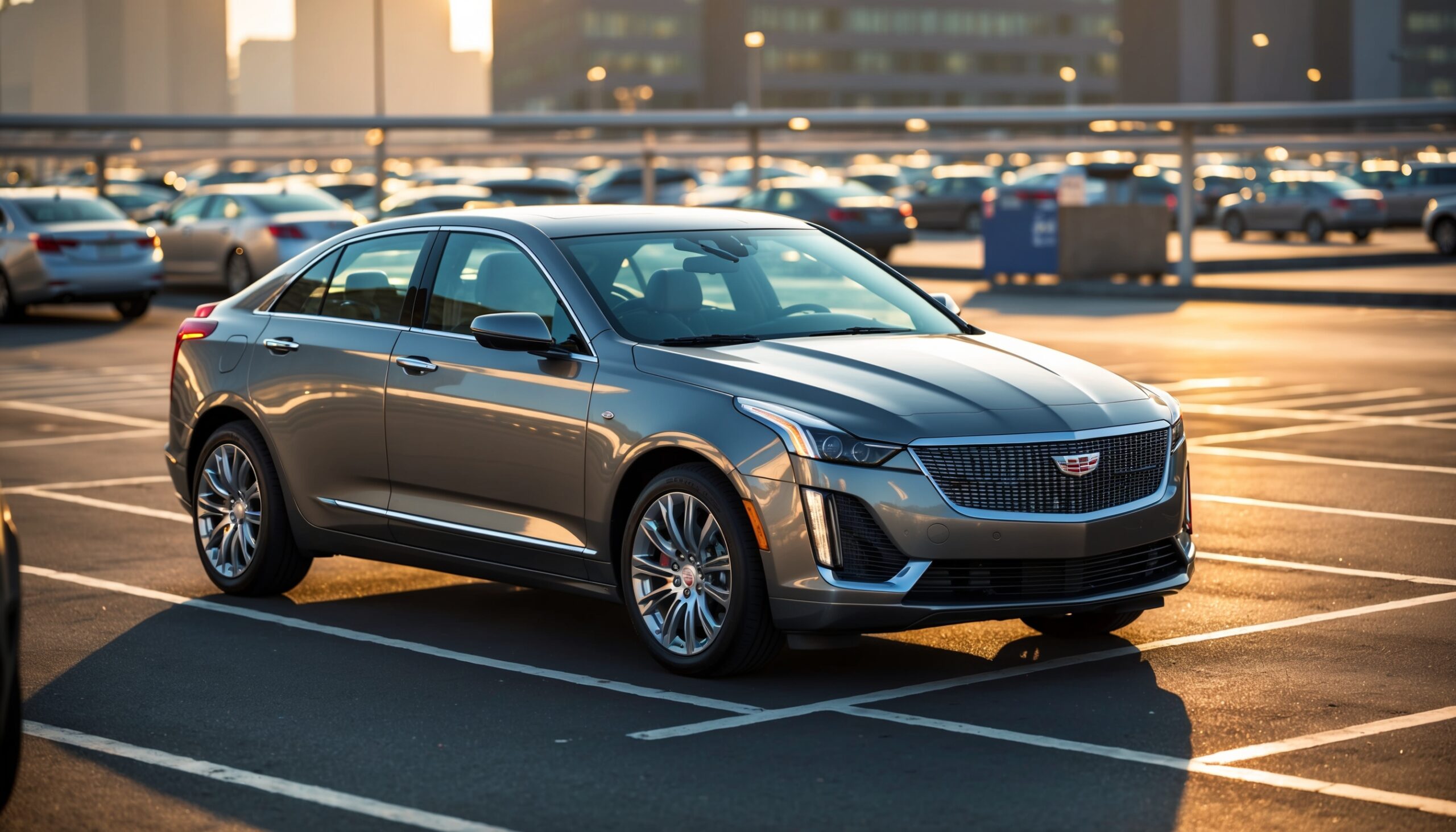The Great Battery Race: Solid-State vs. Next-Gen Lithium-Ion in Upcoming Models
As automotive enthusiasts, we’re living in a thrilling era where innovation is racing at lightning speed. If you’ve been following the latest automotive trends, you’ve likely heard the buzz surrounding electric vehicles (EVs), and at the heart of this revolution is the battle of the batteries. In this blog post, we’ll dive deep into the epic showdown between solid-state batteries and next-gen lithium-ion technology, exploring what they mean for upcoming models and how they could reshape our driving experience.
Understanding the Current Landscape
Before we get into the nitty-gritty of solid-state vs. next-gen lithium-ion, let’s take a moment to appreciate where we stand today. The electric vehicle market has exploded, with major manufacturers jumping on the bandwagon to offer impressive electric options. However, the batteries that power these vehicles are often the unsung heroes (or villains) of the story.
Currently, most EVs use lithium-ion batteries, which have been the gold standard for years. But as we push for longer ranges, faster charging times, and improved safety, the limitations of lithium-ion technology are becoming more apparent. This brings us to the exciting prospect of solid-state batteries.
What Are Solid-State Batteries?
Solid-state batteries are a type of battery technology that replaces the liquid electrolyte found in traditional lithium-ion batteries with a solid electrolyte. This seemingly simple change could have game-changing implications for the automotive industry.
Key Advantages of Solid-State Batteries
- Higher Energy Density: Solid-state batteries can pack more energy into a smaller space, potentially allowing for longer ranges without increasing battery size.
- Improved Safety: The absence of flammable liquid electrolytes reduces the risk of fires and explosions, making solid-state batteries a safer option for EVs.
- Faster Charging: These batteries can handle higher charge rates, leading to significantly reduced charging times.
- Longer Lifespan: Solid-state technology tends to degrade less over time, which could mean a longer lifespan for the battery.
The Next-Gen Lithium-Ion Revolution
While solid-state batteries are garnering a lot of excitement, the evolution of lithium-ion technology is also impressive. Manufacturers are continuously innovating to improve the performance, efficiency, and sustainability of lithium-ion batteries.
Exciting Developments in Lithium-Ion Technology
- Silicon Anodes: By incorporating silicon into anodes, next-gen lithium-ion batteries can significantly increase energy capacity, allowing for greater range and performance.
- Battery Management Systems: Advanced algorithms and smart technology can optimize battery performance and longevity, ensuring that drivers get the most out of their EVs.
- Recycling Techniques: Efforts to enhance recycling processes for lithium-ion batteries are making these batteries more sustainable, reducing the environmental impact of battery production and disposal.
The Race Begins: Who Will Win?
Now that we’ve set the stage, let’s discuss what automakers are doing to push these technologies forward. The competition is heating up, and several major players are investing heavily in both solid-state and next-gen lithium-ion batteries.
Automakers Betting on Solid-State Technology
Several companies are making headlines with their ambitious plans for solid-state batteries:
- Toyota: The Japanese automaker has been a pioneer in hybrid technology and is now making significant strides in solid-state batteries. They aim to introduce solid-state technology in their EVs by the mid-2020s, promising a range of over 500 miles.
- BMW: BMW has also expressed interest in integrating solid-state batteries into their future EV lineup. Their goal is to enhance performance while ensuring safety and sustainability.
- Volkswagen: With plans to launch solid-state batteries by 2025, Volkswagen is positioning itself as a leader in the EV market. They believe this technology will enable them to produce more affordable, long-range electric vehicles.
Next-Gen Lithium-Ion Leaders
While solid-state is the shiny new technology, many automakers are not waiting around and are busy enhancing lithium-ion batteries:
Also Read: Hydrogen on the Horizon: A Realistic Timeline for Fuel Cell Passenger Cars
- Tesla: Known for its cutting-edge technology, Tesla is continuously improving its lithium-ion battery packs. The company is also exploring new battery chemistries to enhance energy density and reduce costs.
- Ford: With the electrification of its popular F-Series trucks, Ford is investing in next-gen lithium-ion technology to meet consumer demand while enhancing performance and range.
- General Motors: GM’s Ultium battery platform is designed to utilize advanced lithium-ion technology, allowing for flexible configurations and improved efficiency in its upcoming electric models.
What This Means for Consumers
As consumers, the outcome of this battery race will have a direct impact on our driving experience. Here’s what you can expect as these technologies evolve:
Range Anxiety Will Diminish
With advancements in battery technology, the dreaded range anxiety that plagues many potential EV owners may soon become a thing of the past. Solid-state batteries promise to deliver longer ranges, while next-gen lithium-ion innovations are also improving capacity. Expect to see vehicles that can easily handle long road trips without the constant need to recharge.
Faster Charging Infrastructure
As charging times decrease with both battery technologies, we can anticipate the expansion of charging infrastructure. Imagine charging your vehicle in the time it takes to grab a coffee—this is rapidly becoming a reality.
Also Read: Impact of New Government EV Subsidies on the 2026 Vehicle Market
More Affordable EVs
As competition heats up and production processes improve, the cost of batteries is expected to decrease. This could lead to more affordable electric vehicles, making them accessible to a broader range of consumers.
Sustainability Takes Center Stage
With heightened awareness of environmental issues, both solid-state and next-gen lithium-ion batteries are striving for sustainability. Expect manufacturers to prioritize eco-friendly practices, from sourcing materials to recycling used batteries, making EV ownership a greener choice.
The Future is Bright for Electric Vehicles
The battle between solid-state and next-gen lithium-ion batteries is just beginning, but one thing is clear: the future of electric vehicles is incredibly promising. Each technology brings unique advantages, and as automakers race to develop the best battery solution, consumers will benefit from enhanced performance, safety, and affordability.
At Torque Feed, we’re excited to see how this competition unfolds and what it means for our favorite automotive brands. Whether you’re a die-hard electric vehicle enthusiast or just curious about the latest automotive innovations, keep your eyes peeled for the incredible advancements on the horizon.
Final Thoughts: What’s Next?
As we look ahead, it’s essential to stay informed about the developments in battery technology. The next few years will undoubtedly bring significant changes to the automotive landscape, and understanding these advancements will help you make informed decisions about your next vehicle purchase.
So, what do you think? Are you more excited about the potential of solid-state batteries or the advancements in next-gen lithium-ion technology? Share your thoughts in the comments below, and let’s keep the conversation going as we navigate this thrilling era of automotive innovation together!
Join the Conversation!
We’d love to hear from you! What are your thoughts on the battery race? Are you leaning towards solid-state technology or next-gen lithium-ion? Stay tuned to Torque Feed for more updates on the latest in automotive technology, and let’s continue exploring the future of driving together!












